Flatbed Variety
Topic 4373 | Page 107
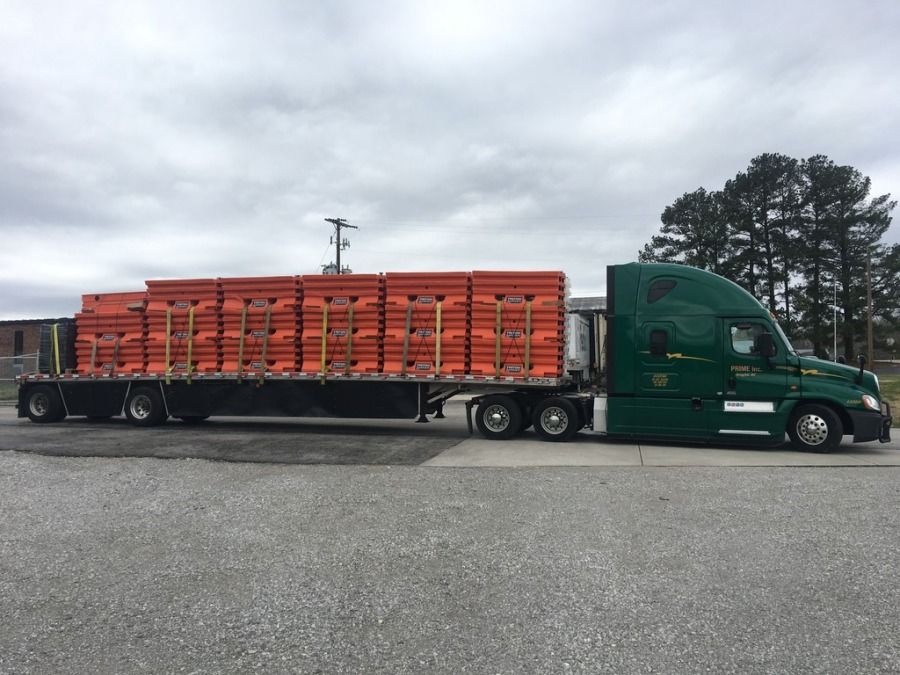
Just some random construction barriers going to Colorado.
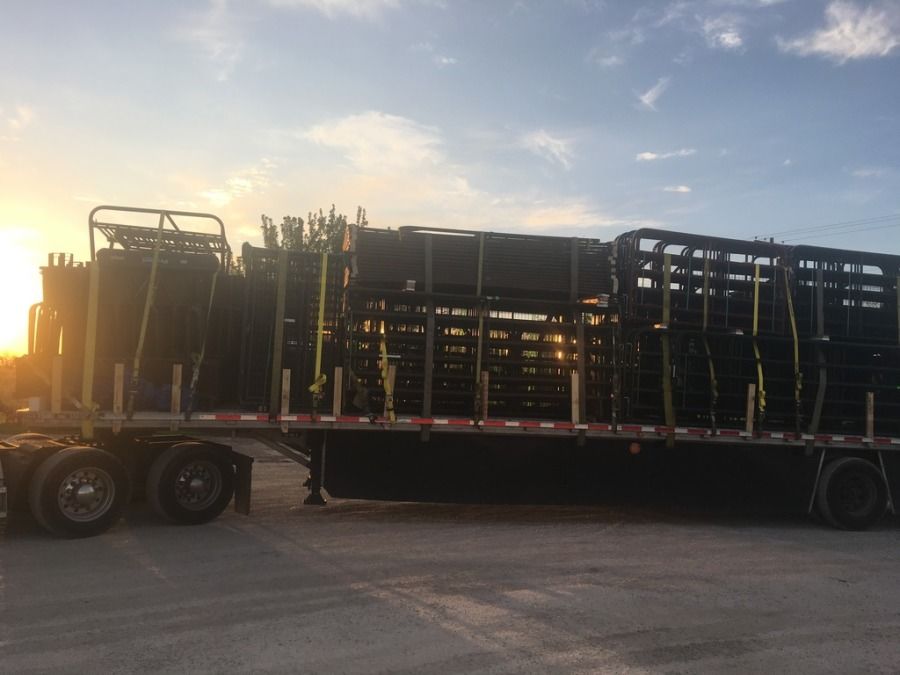
When your whole trailer is just a mess with cattle gates and random ranch supplies. Six drop load in Kansas and Missouri.
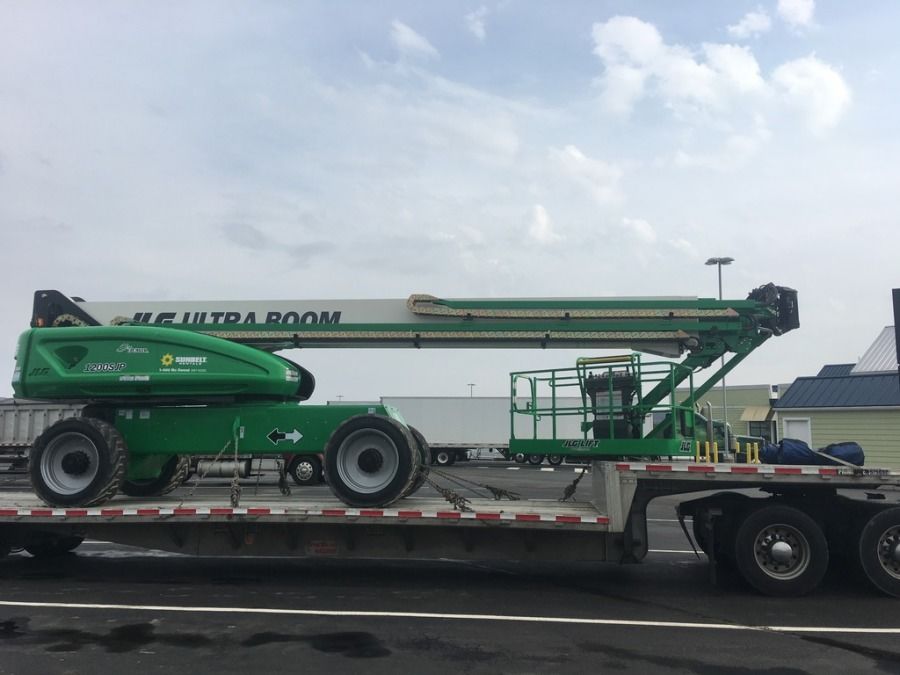
Ultra large sky lift going down to Texas. Equipment loads are always my favorite.
Just some random construction barriers going to Colorado.
When your whole trailer is just a mess with cattle gates and random ranch supplies. Six drop load in Kansas and Missouri.
Ultra large sky lift going down to Texas. Equipment loads are always my favorite.
Nice photos! Thanks for sharing! I'm going to miss pulling flatbeds, but I'll never miss those skirts on Prime's trailers lol.
HOS:
Hours Of Service
HOS refers to the logbook hours of service regulations.All of my loads lately have been weird. They're preloaded. They remove the decks and then weld tanks directly to the frame -- no straps or chains! But then they also put as much as 51,500 pounds of liquid in them, which makes the whole thing feel real unstable. Since there aren't any baffles in the tanks, the stuff moves pretty good and sometimes slams hard, moves the whole truck.
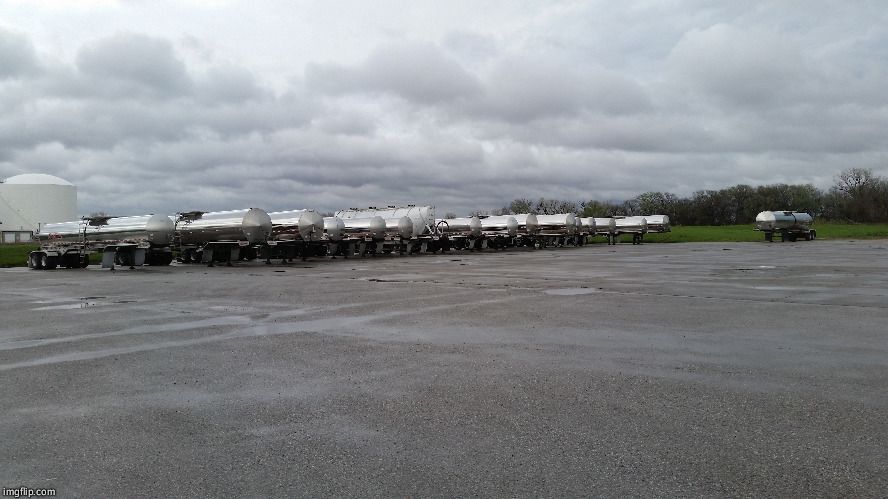
I also got one of these types, which they loaded with dry stuff instead of liquid.
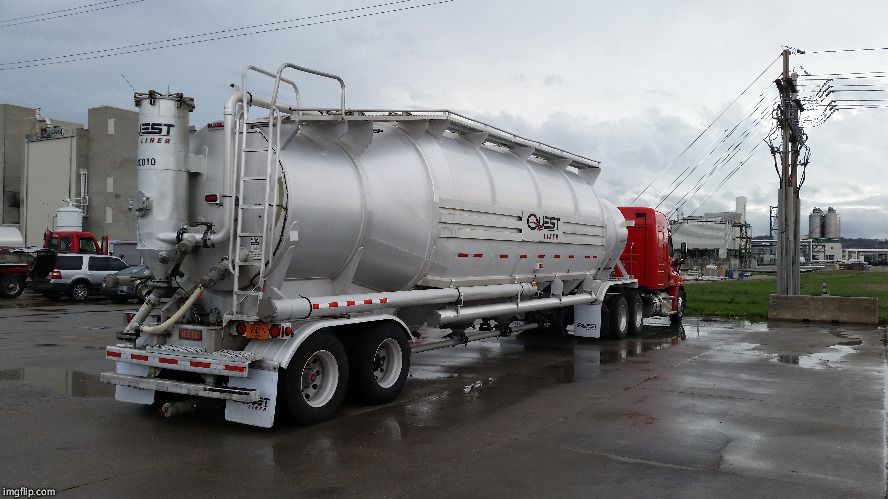
This flatbed business is getting crazier and crazier.
Baffle:
A partition or separator within a liquid tank, used to inhibit the flow of fluids within the tank. During acceleration, turning, and braking, a large liquid-filled tank may produce unexpected forces on the vehicle due to the inertia of liquids.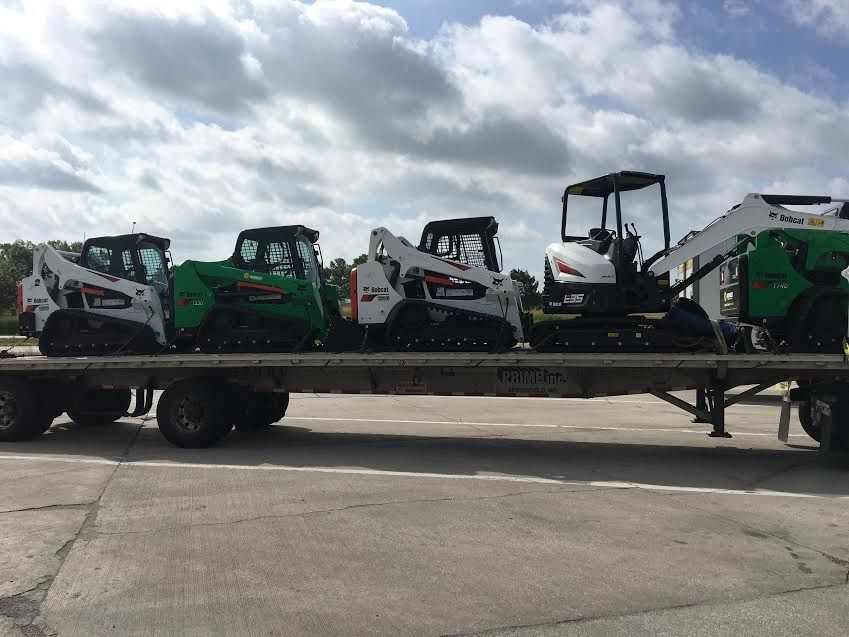
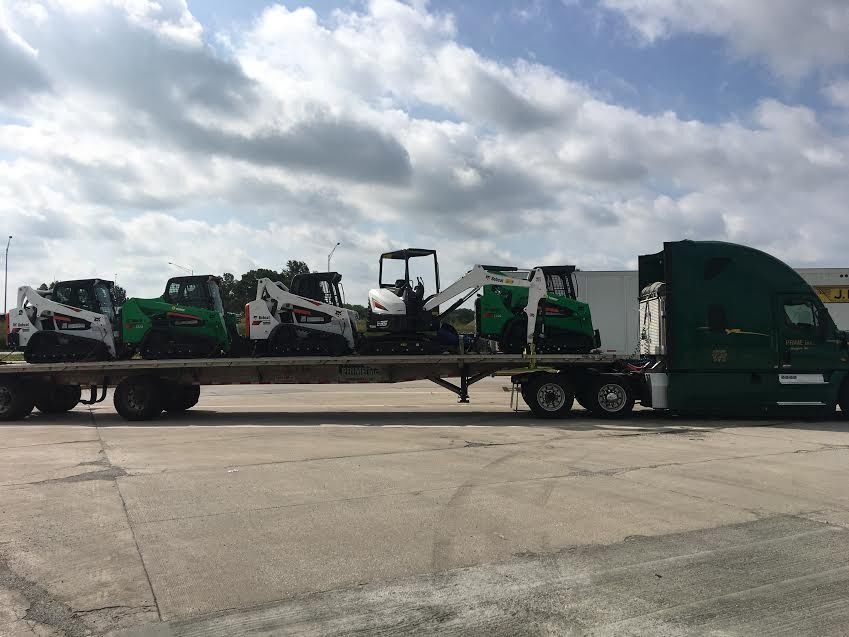
NIce easy load of Bobcats. Equipment loads are still by far my favorite.

Current load

This is how you get maximum down pressure on double T's
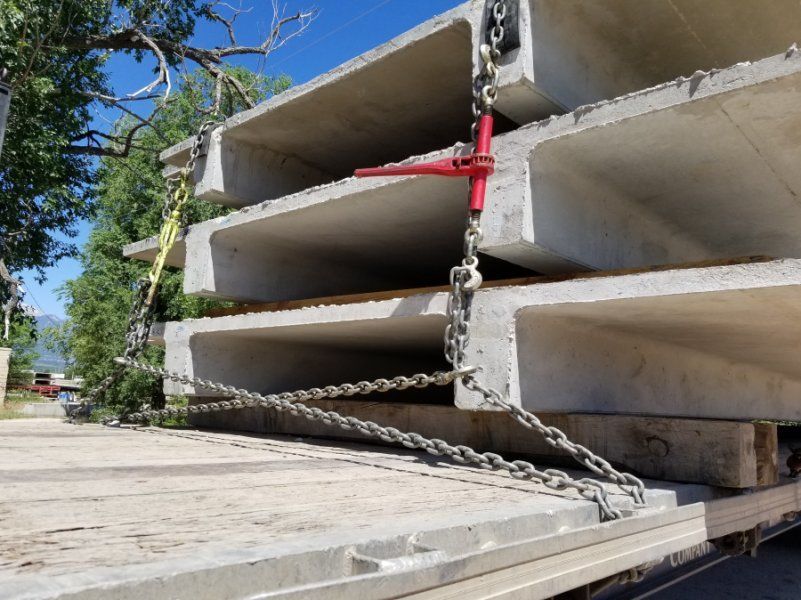
This is how you get maximum down pressure on double T's
That's an interesting setup. I noticed something right away in that last photo that I'd like to ask you about.
I do a little rock and mountain climbing and that setup is similar to what we would refer to as "the death triangle". Turn that set up upside down and imagine yourself rappelling from a single line with anchor points attached to two different trees. The angle between the segments of the line going to the two trees must be less than about 90 degrees or the forces you're exerting on the anchors and the lines becomes compounded exponentially.
Now you're using all of the height you have available with that setup so there's no way to really reduce the stress you're putting on the system. But if you had a much taller load to strap down and you used that same setup, you would reduce the forces you're exerting on the chain tremendously by making the triangle formed between the deck and the chain as large as possible.
Now I have no idea what the forces might be in that setup. It would depend on how much upward force those pieces are putting on the chain. But I just thought I'd throw that out there because I'm wondering if those triangular forces are anything that gets talked about in flatbedding. I know it's a very, very big deal in the climbing community, hence the word "death" being involved in the labeling, and it's one of the very first lessons you're taught in anchoring. Never let that angle get beyond 90 degrees, and less than 60 degrees is preferred. In the case of your setup the angle looks to be maybe 160 degrees. Any upward movement of those pieces is going to exert a staggering amount of force on that chain.
HOS:
Hours Of Service
HOS refers to the logbook hours of service regulations.Ok, the chart on the page I linked to above gives some specifics about the forces I'm talking about. Now you're making one chain into a loop, as opposed to using two separate chains to create the triangle, so that would be considered a "triangle arrangement" in the chart. The "anchor point" would be the outside edge of the trailer.
An upward force of 100 pounds would exert:
74 pounds on each anchor point at 10 degrees
100 pounds at 60 degrees
193 pounds at 120 degrees
380 pounds at 150 degrees
Notice the forces double from 60 degrees to 120 degrees and double again from 120 to 150 degrees.
To be clear, I am absolutely not saying you're doing anything wrong. I'm just pointing out something that is critical (like life or death critical) in the climbing community and I wondered if it's something that gets talked about in flatbedding.
Brett, I have never hauled double-Ts so I have never had occasion to make the chain tension dependent on another chain system. The thing that I wonder about is something the climbing article mentions:
Redundancy: if the webbing fails on one leg of the anchor, the entire anchor will fail.
Extension: if one of the anchors fails, the webbing will extend its full length and shock load the remaining components of the system
I certainly get the concept of how Pat has secured these, and honestly I'd be comfortable pulling that load. The upward forces generally aren't great. Securement guidelines are for 50% of weight downward, but only 20% upward. You'd have to be drag-racing through a dirt lot truck stop in Arkansas to get more than 20% upward pressure on those chains.
Assuming that's 3/8 inch chain, the WLL is 6600 pounds for each chain. He's got four chains on it, so we can be sure that the total load weighs no more than 52,800 pounds (and probably a lot less than that), which gives us 10,560 pounds maximum that we need to secure from upward movement. All four chains are working to secure the load from upward movement, so we've got 26,400 pounds of securement for that component of movement.
So, theoretically, if that angle is 150 degrees, and the load really weighs 52,800 pounds, and Pat goes racing through the dirt lot to completely negate any buffer that the air bags will offer, . . . He's still ok because the two chains perpendicular to the load aren't hooked in a death triangle and he has 13,200 pounds of securement for upward movement, even if the other two chains fail.
Pat can certainly correct me if I'm wrong, but I think those chains are there to ensure that any bouncing that happens doesn't allow the load to creep along that axis where the concrete legs are situated above one another. My guess is that the load weighs less than 26,200 pounds total, and so theoretically he could be legal (but probably not safe) just with the two chains that go from one side of the trailer to the other. If it weighs more than that, I'd be surprised there isn't a third chain from side to side.
But to answer your original question, no, most flatbedders don't think about the American death triangle, and certainly we don't break out our slide rules to do the trigonometry calculations for the specific angles on the chains. Keep it sharper than 45 degrees and you're good, generally.



HOS:
Hours Of Service
HOS refers to the logbook hours of service regulations.The other reason for those chains may be to keep the edges way out on the sides from cracking. Is that right or no, Pat?
HOS:
Hours Of Service
HOS refers to the logbook hours of service regulations.New Reply:
New! Check out our help videos for a better understanding of our forum features

















Preview:
This topic has the following tags:
Advice For New Truck Drivers Choosing A Trucking Company Flatbed Hard Lessons Learned Load Securement Photos Truck Driving Stories







 TT On Facebook
TT On Facebook
Wow I am impressed! I will certainly consider them after a year or two with Swift who I am going with as my first company for trucking. Very excited